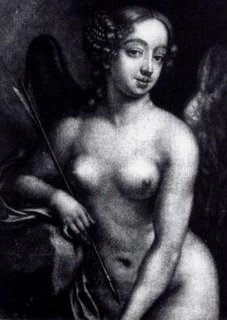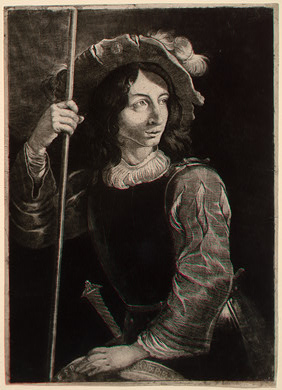The second volume of Ruskin’s
Modern Painters, published in 1846, might as well have ended “To be continued…,” given the number of places where he apologizes for treating something too briefly, & promises to get back to it at greater length. But while JR could write with enormous concentration (& at enormous length) on whatever interested him at the moment, his interests were pretty easily distracted, & he wouldn’t get back to
Modern Painters for another ten years. (His lack of concentration becomes pretty intense in later works, where following his line of thought from subject to subject becomes something like playing Whack-a-Mole at the arcade.)
His interest had turned to architecture, one of the fields in which he had no formal training, & his first production in architectural theory,
The Seven Lamps of Architecture (1849), turned out to be by far his most publically successful and popular work (though he described it in the 1880 reprint as “the most useless [book] I ever wrote”). It’s a pretty good read, once you understand that by “architecture” Ruskin doesn’t mean what we understand by the term: as far as the design of buildings, from the ground up, the arrangement of space & materials & so forth – all that he dismisses as “building.” Instead, by “architecture” he understands the skin of the building, its ornamented and otherwise aesthetically figured surface.
The “lamps” themselves – the lights by which architects ought to operate – are straightforward enough: the lamp of “sacrifice” – architecture should be an offering to the deity; of “truth” – it should offer honest workmanship and openly display its materials, remain true to its medium; of “power” – the building should be thought of as a shape, a structure of masses; of “beauty” – its ornamentation (and it ought to be ornamented) should be from nature, rather than geometrical or abstract; of “life” – the building itself should be planned and constructed by human hands, making the allowances and alterations for which contingency calls, and stamping the finished work with their own mark; of “memory” – buildings, which inevitably embody the culture out of which the proceed, should be constructed for the ages; and of “obedience.”
This last lamp is a touchy one, & brings to the fore the political Ruskin, which is inseparable from the religious Ruskin (at this point still a confirmed evangelical). “There is no such thing as Liberty,” he proudly proclaims: human beings only fulfill themselves by obedience to laws under which they live – not political laws, but moral and spiritual laws. (He’s closer to Spinoza than to the young Coleridge, in other words.) Ruskin is a confirmed, “violent Tory” as he once called himself, an advocate of “subordination” as much as his precursor Dr. Johnson.
But while one could compile a list of quotations from Ruskin that make him seem the most conservative thinker possible, one can also come up with a series of sentences that make him a visionary social reformer (William Morris certainly thought of him thus). What he isn’t,
never ever, is a vile capitalist like the figures behind Thatcher or the despicable forces piloting our present administration. Ruskin thinks things are deeply askew in the world of industrializing Victorian England: but it’s the free market as much as anything else at fault. One money quote (and read this one thru to the passage I have italicized, before you dismiss JR as a vile reactionary):
All the horror, distress, and tumult which oppress the foreign nations [he’s writing in the wake of the 1848 revolutions], are traceable, among the other secondary causes through which God is working out His will upon them, to the simple one of their not having enough to do. I am not blind to the distress among their operatives; nor do I deny the nearer and visibly active causes of the movement: the recklessness of villany in the leaders of revolt, the absence of common moral principle in the upper classes, and of common courage and honesty in the heads of governments. But these causes themselves are ultimately traceable to a deeper and simpler one: the recklessness of the demagogue, the immorality of the middle class, and the effeminacy and treachery of the noble, are traceable in all these nations to the commonest and most fruitful cause of calamity in households – idleness. We think too much in our benevolent efforts, more multiplied and vain day by day, of bettering men by giving them advice and instruction. There are few who take either: the chief thing they need is occupation. I do not mean work in the sense of bread – I mean work in the sense of mental interest….
Ruskin has a very Marxian sense, it seems to me, of the dignity of labor, and of the way in which too much of what Victorian England imposes on its laborers – navvies moving dirt for railways, workmen slapping up hastily-planned, ugly tenements, women and children working repetitive factory jobs – is ultimately dehumanizing, allows no space for the craft and imagination that he sees displayed at every facet of the gothic cathedrals he venerates. It’s the cash nexus, stupid, as Ruskin’s later “master” Carlyle would say.
***
Of course, it’s hard to read any of Ruskin’s impassioned pages on the beauties and graces of medieval architecture without reflecting on the architectural waste land within which one lives, a vast asphalted and topiaried series of buildings slapped up at the cheapest possible expense, faced over with anonymous stucco and roofed with clay tiles in order to serve up some faint
soupçon of “regional” flavor – to make some far-fetched allusion to Tuscany or the Iberian peninsula. Ruskin would have loathed the modernism of the Bauhaus and Van Der Rohe, and he would have even less time for “postmodern” eclecticism – “Parody,” he says, is “the most loathsome manner of falsehood” – but there’s very little in a two-county radius of here that even has the virtues of those styles. And the “lamp of memory”? Please – granted they’ve only been building down here for the better part of a century, but South Florida ought to patent the term “disposable architecture.” Several building put up over the last two decades on the campus of Our University – at the time headed by a president who professional credentials were as an
architect – have already been demolished to make way for newer, shinier concoctions of stucco and glass where students might poke their pencils through the beaverboard walls & faculty can figure out where to put books in offices designed without bookcase space.
I’ve said somewhere that it’s impossible to drive an hour in any direction here and find a building that wouldn’t make Ruskin puke – maybe that’s an overstatement, but I’m not betting on it.
 Gottfried Wilhelm Leibniz to Simon Foucher, 1675:
Gottfried Wilhelm Leibniz to Simon Foucher, 1675:









